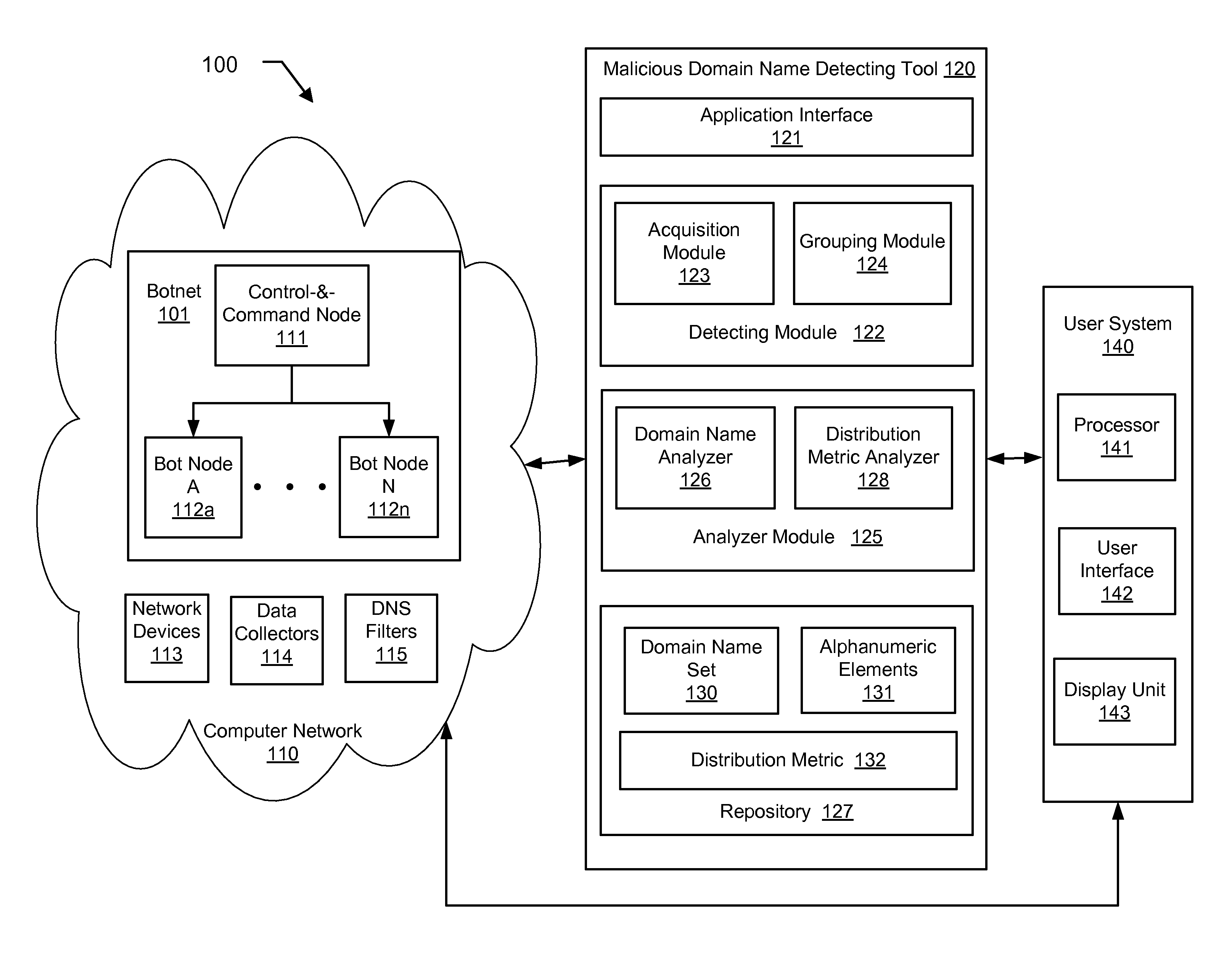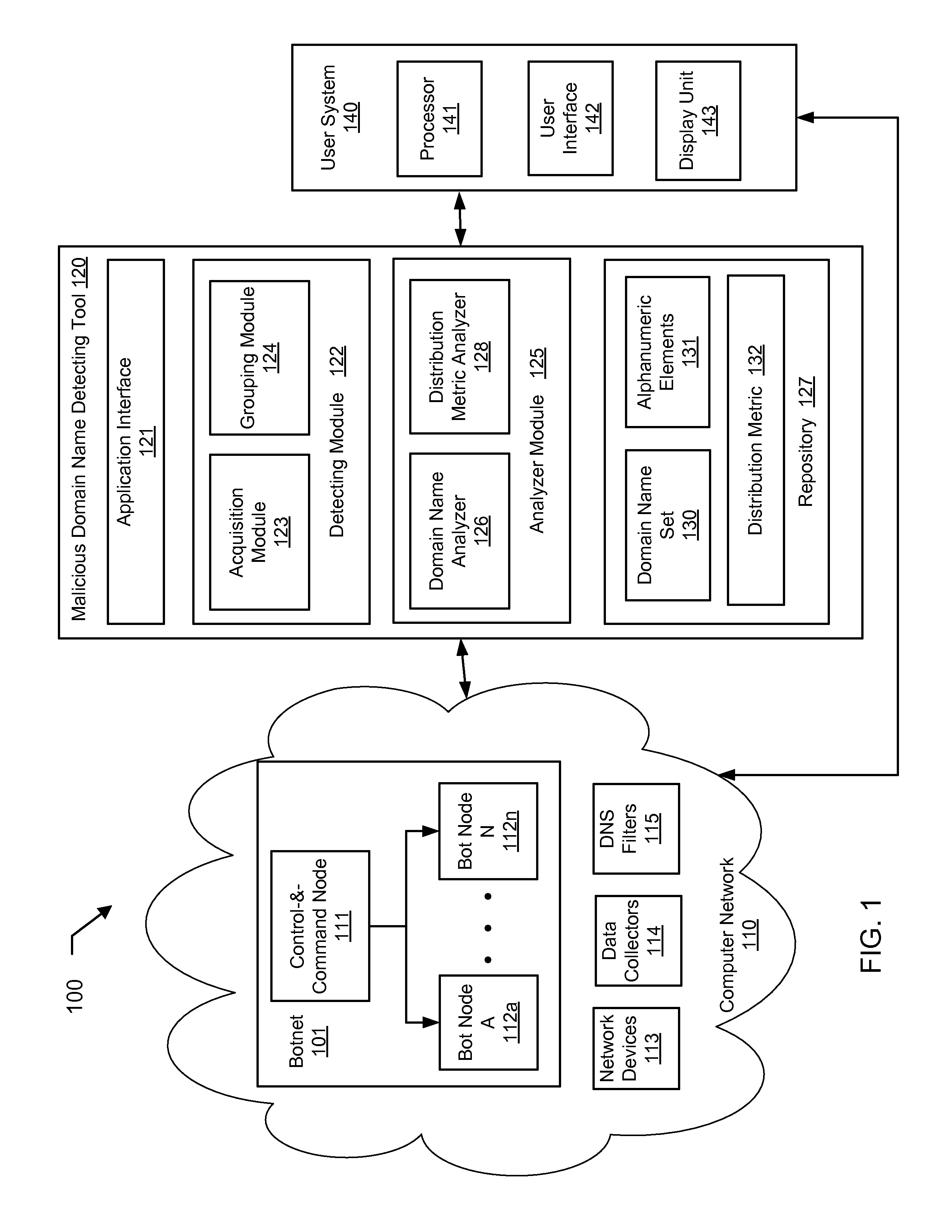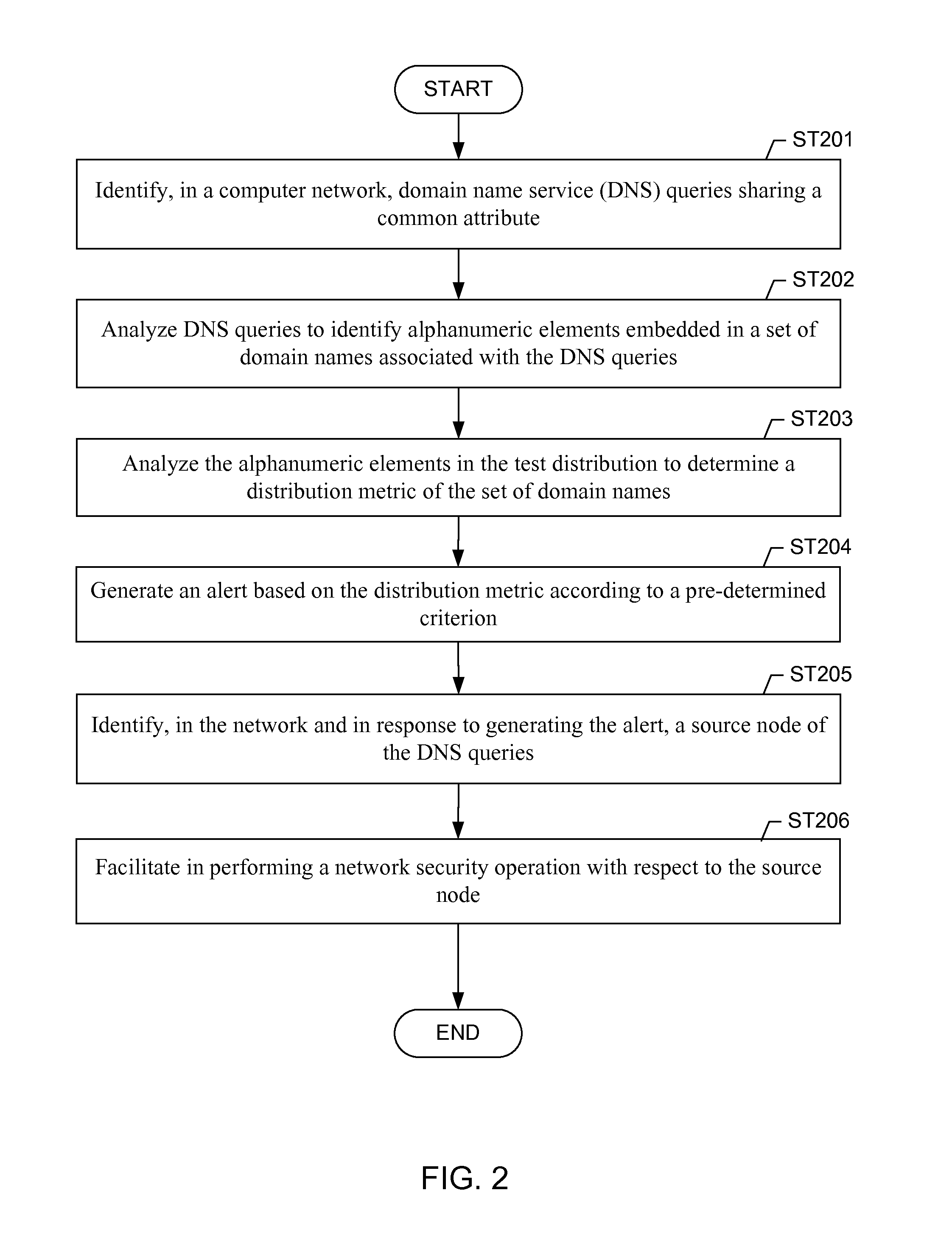Detecting DNS fast-flux anomalies
a technology of anomalies and anomalies, applied in the field of detecting malicious activities in the computer network, can solve the problems of inability to scale up the reverse engineering effort applied to the domain generation algorithm for similar future attacks, and the combination would be even more difficult to detect,
- Summary
- Abstract
- Description
- Claims
- Application Information
AI Technical Summary
Problems solved by technology
Method used
Image
Examples
Embodiment Construction
[0017]Specific embodiments of the invention will now be described in detail with reference to the accompanying figures. Like elements in the various figures are denoted by like reference numerals for consistency.
[0018]In the following detailed description of embodiments of the invention, numerous specific details are set forth in order to provide a more thorough understanding of the invention. In other instances, well-known features have not been described in detail to avoid obscuring the invention.
[0019]In traditional approaches for detecting malicious machines, the complete network traffic of the machines is analyzed. The volume of the network traffic can be extremely high and analyzing such volumes of traffic to detect malicious activity is challenging. The network traffic of all the machines in the network would need to be analyzed to differentiate between malicious and legitimate machines. Embodiments of the invention use the Internet Domain Name Service (DNS) replies returned ...
PUM
 Login to View More
Login to View More Abstract
Description
Claims
Application Information
 Login to View More
Login to View More - R&D
- Intellectual Property
- Life Sciences
- Materials
- Tech Scout
- Unparalleled Data Quality
- Higher Quality Content
- 60% Fewer Hallucinations
Browse by: Latest US Patents, China's latest patents, Technical Efficacy Thesaurus, Application Domain, Technology Topic, Popular Technical Reports.
© 2025 PatSnap. All rights reserved.Legal|Privacy policy|Modern Slavery Act Transparency Statement|Sitemap|About US| Contact US: help@patsnap.com



